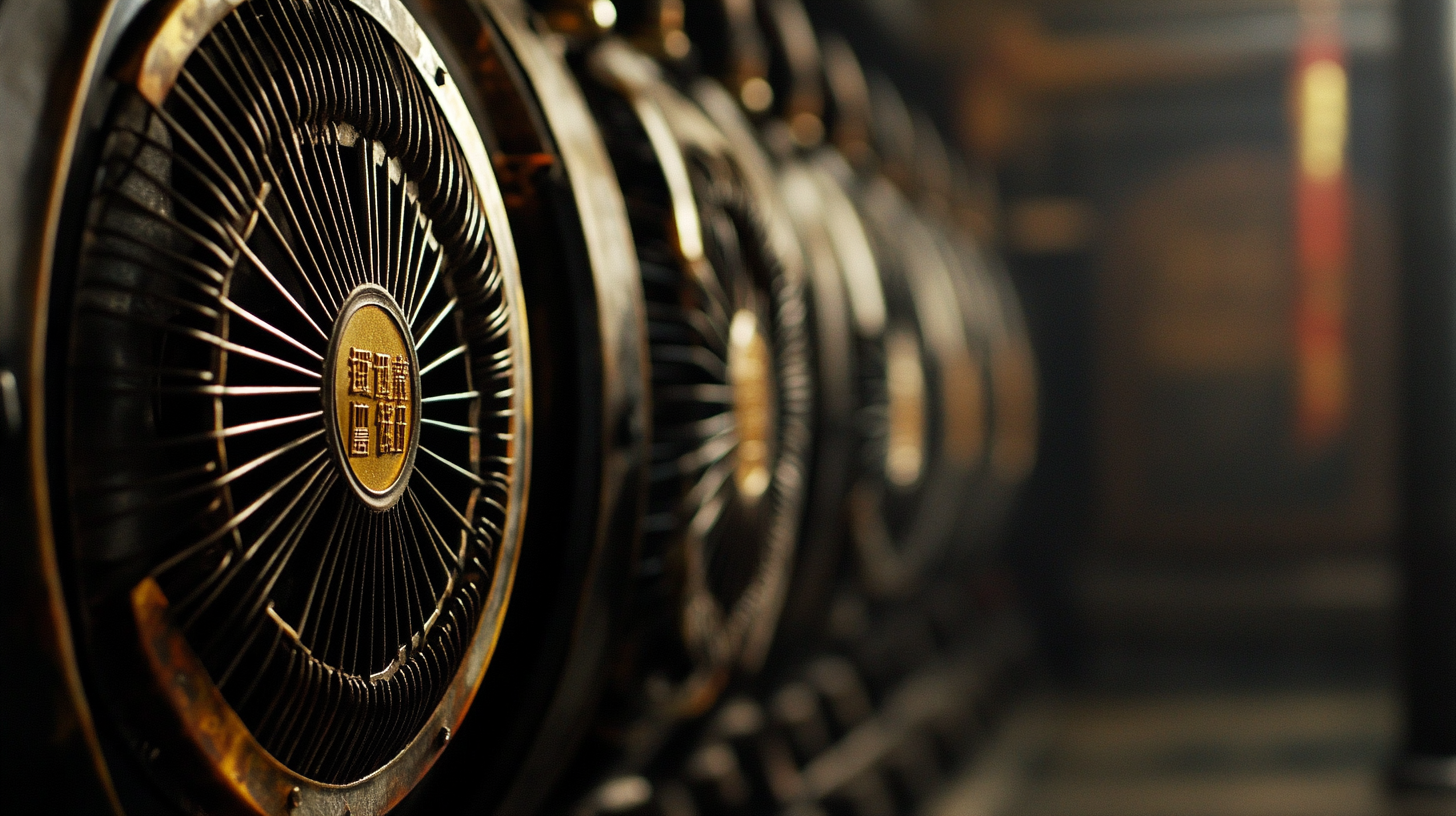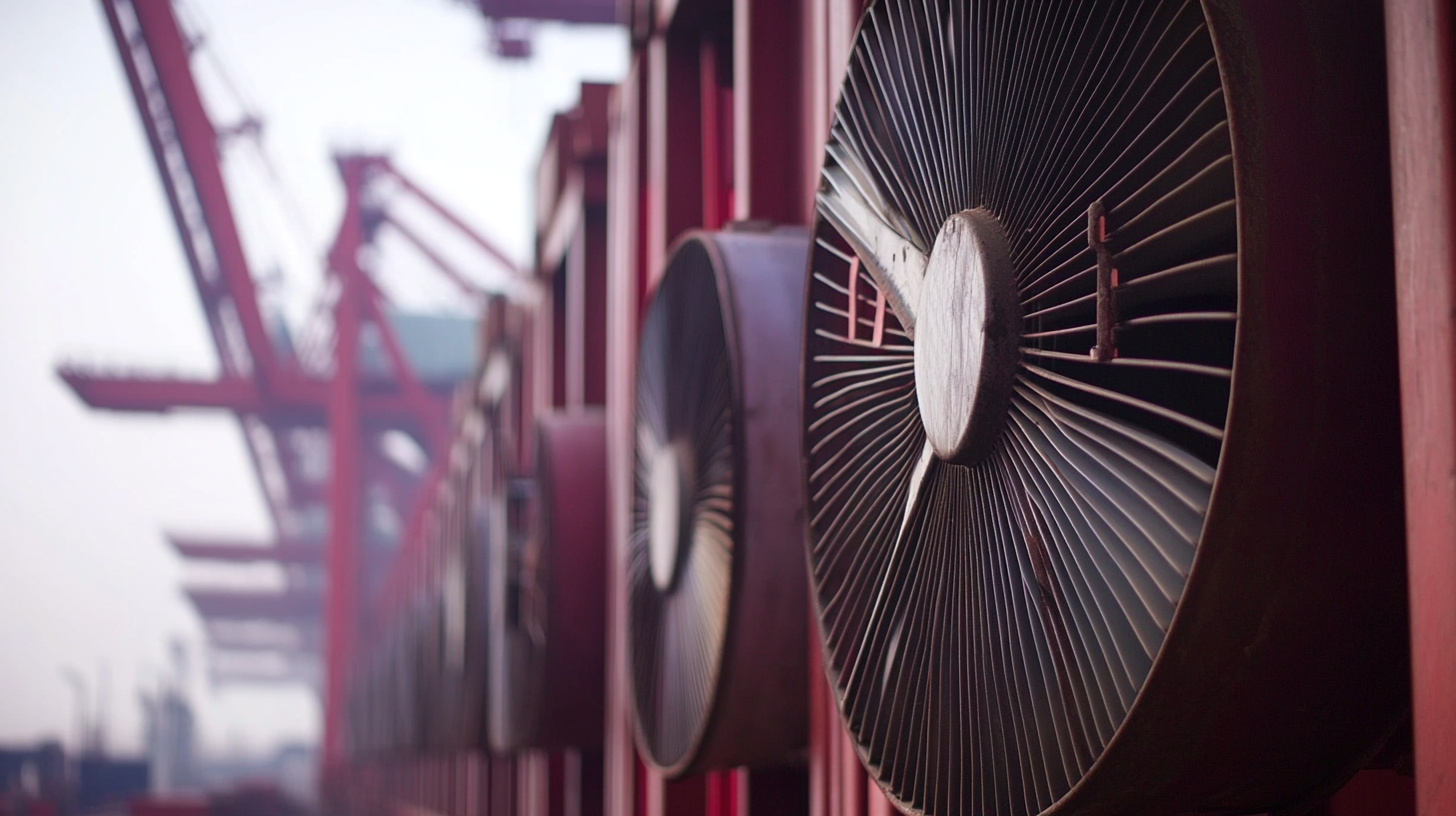In recent years, the global market has witnessed significant shifts due to escalating trade tensions and tariff impositions between the United States and China. Despite these hurdles, the Chinese manufacturing sector, particularly in the heater fan industry, has shown remarkable resilience. According to the latest market analysis from Statista, the global heater fan market size is projected to reach approximately $6.7 billion by 2026, with a compound annual growth rate (CAGR) of 6.2% from 2021 to 2026. This growth is notably driven by increased consumer demand for energy-efficient heating solutions, as well as innovation in design and functionality. As tariffs create challenges, many manufacturers have adapted by optimizing production processes and enhancing product features, allowing them to not only survive but thrive amidst adversity. This blog will explore how China’s best heater fans are overcoming tariff-related obstacles and maintaining a competitive edge in the international market.

The global trade landscape has been significantly altered by the imposition of tariffs, affecting industries worldwide. In China, one sector particularly impacted is the home appliance industry, including heater fans. These tariffs, designed to protect local markets, have had the unintended consequence of pushing Chinese manufacturers to innovate and improve their products. This surge in quality and efficiency has allowed brands to maintain a competitive edge, even in a challenging trade environment.
One standout example is China's leading heater fan brand, which has embraced the challenges posed by tariffs as an opportunity for growth. By investing in research and development, the company has not only enhanced its product offerings but has also improved its supply chain efficiencies. As a result, it managed to capture a larger market share, both domestically and internationally. This situation illustrates how tariffs can serve as a catalyst for innovation, prompting companies to rethink their strategies and adapt to new market conditions.
In today’s complex global trade landscape, China's manufacturing sector showcases remarkable resilience, particularly in the home appliance market. Despite facing significant tariff barriers, Chinese companies have adapted and innovated to maintain their competitive edge. Particularly, the heater fan segment has seen a substantial surge, highlighting how these companies navigate the challenges posed by international trade policies. They have adopted strategic pricing, enhanced product features, and improved supply chain efficiencies to mitigate the impact of tariffs, ensuring affordability and value for consumers.
Moreover, China's robust domestic market has bolstered its manufacturers as they pivot to cater to local demands while simultaneously exploring international opportunities. The ability of manufacturers to leverage technology and data analytics has allowed them to respond swiftly to market shifts, optimizing production and distribution. This dynamic adaptability not only helps in weathering trade barriers but also positions Chinese brands as formidable players in the global market. As trade tensions continue, China's experience serves as a compelling case study of resilience and innovation in overcoming obstacles.
The emergence of innovative heater fans in the Chinese market showcases a significant case study in overcoming tariff challenges. According to a recent industry report by Grand View Research, the global heater fan market is expected to grow at a CAGR of 7.5% from 2021 to 2028. This growth can be attributed to consumer demand for energy-efficient heating solutions, which has led to advancements in fan design and technology. China's leading manufacturers have capitalized on this trend by developing heater fans that combine aesthetic appeal with optimal performance, allowing them to maintain a competitive edge despite rising tariffs on imported goods.
In response to international trade hurdles, Chinese companies have prioritized research and development to create innovative products that meet diverse consumer needs. A report by the China Household Electric Appliance Association indicates that the market share for advanced heater fans has increased by over 30% in the past two years alone. By integrating smart features such as app control and energy monitoring, these heater fans not only adhere to modern consumer preferences but also position themselves as eco-friendly options. This strategic approach not only mitigates the impact of tariffs but fosters a resilient and adaptable industry capable of thriving in a challenging trade environment.

In the face of rising tariff challenges, Chinese manufacturers are adopting innovative strategies to maintain their competitive edge, particularly those in the household appliance sector, such as heater fans. According to a recent report by the China Household Electrical Appliances Association (CHEAA), the heater fan market is projected to grow by 12% annually through 2025. This growth is fueled by increased demand for energy-efficient and cost-effective solutions in a global market that is increasingly sensitive to price fluctuations due to tariffs.
To thrive amidst these obstacles, manufacturers are ramping up investments in technology and automation. By integrating advanced manufacturing techniques, such as IoT and AI, companies can optimize their production processes, reduce costs, and improve product quality. The International Trade Administration noted that manufacturers leveraging these technologies could see a reduction in operational costs by up to 15%, allowing them to better absorb tariff impacts and stay competitive. Additionally, diversifying supply chains remains crucial; companies are seeking alternative sourcing options to reduce dependency on tariff-affected markets, ensuring a more resilient operational framework.
| Manufacturer | Product Model | Price (USD) | Sales Volume (Units) | Market Share (%) | Manufacturing Strategy |
|---|---|---|---|---|---|
| Xiaomi | Mi Heater Fan 1 | 49.99 | 150000 | 15 | Cost reduction through automation |
| Gree Electric | Gree Smart Fan | 45.00 | 120000 | 12 | Focus on energy efficiency |
| Midea | Midea Warm Breeze | 52.50 | 170000 | 18 | Investing in R&D |
| Haier | Haier Heatwave | 55.00 | 90000 | 9 | Supply chain optimization |
| Dyson | Dyson Hot+Cool | 399.99 | 60000 | 6 | Premium price strategy |
In today’s market, consumer preferences are undergoing a significant transformation, particularly in the realm of quality and affordability. As observed in the latest trends, consumers are increasingly gravitating towards products that exemplify a blend of premium quality and reasonable pricing. This shift is evident across various industries, where brands that manage to balance affordability with a touch of luxury are experiencing robust growth. This phenomenon, often referred to as "affordable luxury," reflects an evolving mindset among consumers who desire high-quality products without the high-end price tag.
The heater fan market in China serves as a pertinent example of this trend. Amidst challenges such as tariff hurdles, the demand for heater fans that promise not just functionality but also design and durability has surged. Consumers are looking for solutions that fit within their budgets while delivering modern aesthetics and reliability. As companies respond to these shifting demands, the emphasis on providing value through quality and affordability is becoming crucial for establishing brand loyalty and standing out in a competitive landscape. This evolution highlights the importance of understanding consumer behavior to effectively navigate the complexities of today’s trade challenges.
